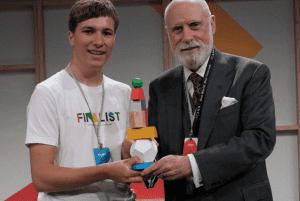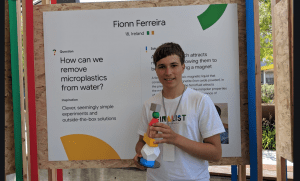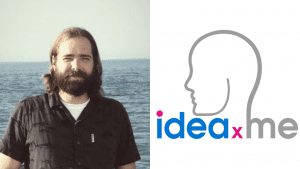Dr. Richard W. Smith (PhD), ideaXme World Oceans ambassador and Oceanographer at Global Aquatic Research, interviews 18 year old scientist Fionn Ferreira, winner of the 2019 Google Science Fair.
Fionn Ferreira

Fionn Ferreira recently received the award for developing a method for removing plastics from water. Whilst this represents a breakthrough in the established scientific community for the removal pollutants from water, many are surprised that the innovator behind this achievement has only recently finished high school.
Inspired by a high school chemistry lesson, Fionn developed a process that could make a big difference in reducing the amount of microplastics in our waterways and oceans.
“Microplastics are just tiny plastic particles, which may have been made tiny, like microplastics in microbeads and soaps. They could also be created when you wash your clothes. For instance, little plastic fibres that come off the clothes. Or, it could be larger plastics that have broken down through UV or mechanical erosion. When these plastics enter our water or the air, these tiny plastic particles are really small and they can actually cause lots of problems if they are ingested by other organisms. They can travel through the food chain until they eventually reach us humans,” Fionn explains.
“We don’t really know the extent of problems caused by microplastics, but they have definitely been linked to cancer and lots of nasty things.”
Currently, water filtration is done using floating nets for the larger pieces of plastic, with microplastics being filtered out through carbon filtration, a lengthy and expensive process.

Fionn’s Ferrofluid Filtration Method
Fionn’s method involves creating ferrofluids, a magnetic liquid created from light oils, such as vegetable oil, and magnetised powder. Both ferrofluids and plastics are nonpolar, and because of this, they stick to one another in water.
Not only is this an innovative solution to the serious plastic problem in our waterways, but it is also sustainable and affordable. Magnetized powder is a byproduct of many industries, such as mining, and the vegetable oil used can be recycled from large fast food chains, and even recycled further from the microplastic filtration process itself.
Even without using recycled magnetised powder and vegetable oil, the maximum estimated cost of this method would be $1.60 per every 1000 liters of water filtered.
Fionn tested the method near his home, in an area with oil spill residue which had attracted plastic waste. He tested his method on the 10 most common microplastics in our oceans, and found that he was able to filter microplastics ranging from six millimeters to mere nanometers in size.
Fionn and his ferrofluid filtration system won the top prize in the 2019 Google Science Fair, an annual science competition open to students all around the world between the ages of 13 and 18.
Potential Applications

Since publishing his findings and winning the Google Science Fair, Fionn has been approached by a number of different companies to develop this further. He has not patented his method, leaving it in the public domain.
”I think that it’s great that companies can use it and can implement it, because I want it to be implemented. I don’t want to make loads of money off of it, I just want it to be something that people can actually use.”
Possible applications include use in wastewater streams and water treatment plants, as well as applying this method to water intake systems in large shipping vessels. This would further increase the sustainability of Fionn’s method, as no additional vessels would be needed and the microplastic filtration could occur as a positive byproduct as these ships transport goods.
Looking ahead, Fionn will not only be continuing his work in microplastic filtration, but he will also be exploring his other passions.
“I think the idea of communicating science to the general public is something that motivates me.”
Tune in to hear Fionn’s incredible story, what his future holds, and how he came to have a minor planet named in his honor.

Photo Credits: Fionn Ferreira
Interview Credits: Dr. Richard W. Smith
If you liked this interview, be sure to check out our interview with Ben Whitehouse on using art and science to combat climate change!
Follow ideaXme on Twitter: @ideaxm
On Instagram: @ideaxme
On YouTube: ideaxme
Find ideaXme across the internet including on iTunes, SoundCloud, Radio Public, TuneIn Radio, I Heart Radio, Google Podcasts, Spotify and more.
ideaXme is a global podcast, ambassador and mentor programme. Our mission: Move the human story forward!™ ideaXme Ltd.

Pingback: Blue Marine Foundation: Protect The World's Oceans - ideaXme
Pingback: John Englander: Rising Seas and Moving to Higher Ground - ideaXme